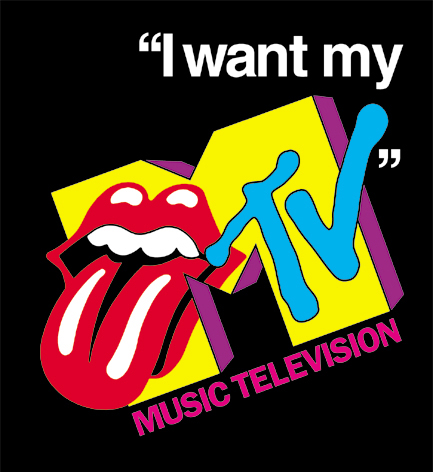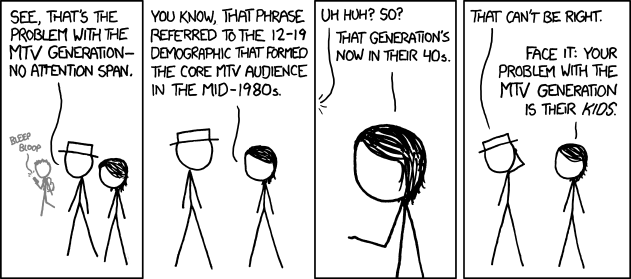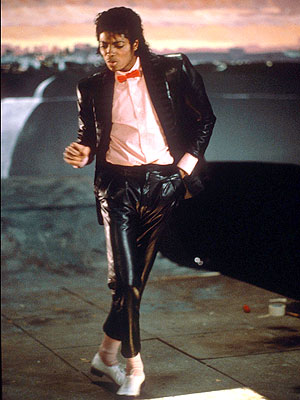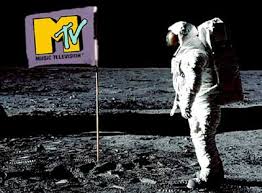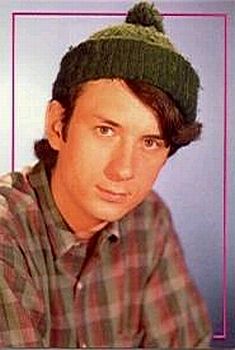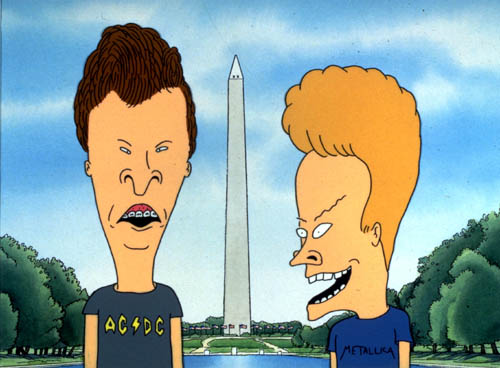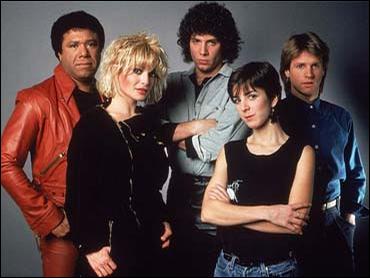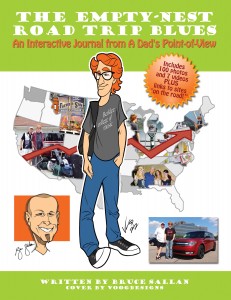It’s time to continue our Evolution of Technology series, this time remembering MTV. As usual, I co-write these columns with Professor David E. Weber. I can’t believe I’m even putting “MTV” and “Remembering” in the same sentence, but it’s now been long enough that MTV is part of our nostalgia plus the changes in MTV have been significant in addition to its impact on our culture and entertainment.
My co-conspirator in writing this series, Professor David E. Weber, will weigh in with his thoughts and memories after I lead off with mine. First, let’s remember that MTV stands for Music Television and that was exactly what it was when it debuted. Pretty much everything they aired was a music video often presented my video-jocks or whatever the term they used for the DJ-like hosts.
Some of those hosts – I know Professor Weber will remember particular names – became minor celebrities in their own right while others came and went. But, for me, the initial excitement of MTV was the music videos. They were simple productions initially but they grew into more and more elaborate ones with the tipping point probably being John Landis and Michael Jackson’s mini-movie of “Thriller.”
There were many significant changes that followed MTV’s popularity. First, dance became almost an integral and essential component of every music video. If you didn’t dance, you had a huge liability. Janet Jackson’s music videos were all elaborate dance productions and, of course, Michael set the bar with his, especially “Billie Jean.”
New artists that were not dance-centric would use clever film techniques that invariably involved fast-cut editing and creative visuals. I’m sure Michael Bay learned a thing or two about how to edit his films from the huge initial success of MTV. For that matter, the changing techniques of editing that MTV ushered in very quickly infiltrated not only mainstream movies but network television and even commercials. After all, a music video was initially thought of as simply a commercial to sell a record.
Later, music videos became an art unto themselves with awards and a whole industry growing around them. It’s my memory that MTV also came about just as CDs were being introduced as the new form of music hardware, replacing not only LP albums but also the then ubiquitous cassette tapes. I got my first CD player during these early years of MTV and marveled at how a new song such as “Take On Me” (by one-hit wonder A-Ha) sounded so incredible on a CD. I also absolutely loved the “Best of Motown” CD that I got, totally falling in love all over again with such cherished songs as “I Heard It Through the Grapevine” by Marvin Gaye, “Tears of a Clown” by Smokey Robinson, and everything by The Temptations.
Cyder Lauper became a star with her eponymous hit, “Girls Just Want to Have Fun” thanks to MTV as did so many others.
But, with so many good things, MTV began to deteriorate badly in my opinion. For a while, their spin-off VH-1 was keeping up the music video spirit, but soon Realty TV took over MTV and it seemed in no time, all their programming was crap, to put it bluntly.
In recent years, it seems that YouTube has replaced MTV as the method of introducing new music and new artists. MySpace, when it lost the social network war to Facebook, morphed into another music platform that I’ve scantly visited in years.
With that, I’ll turn over the rest of this reflection to Professor Weber!
How did MTV get started? I never really knew … one day, it appeared on cable and made a big splash in the U.S.A., and next thing it had gone global, with offshoots in dozens of countries.
So I consulted a book called “Inside MTV,” plus several journal articles, and found some answers to my question. No two media executives or researchers appear to completely agree on how MTV evolved. It appears, though, that more than a decade after “The Monkees” — a goofy late-1960s Beatles-movie-wannabe TV series — got canceled, one of those Monkees played a key role in MTV’s development.
Mike Nesmith, the Monkee who wore the woolen cap, took music seriously—well, more seriously than perhaps did the other three Monkees. He never made it big as a solo act, but he tried. Eventually he moved into arts and entertainment management and, in the late 1970s, developed a show called “Pop Clips.” Aimed at teenagers, “Pop Clips” broadcast music videos (or “clips”) that Nesmith produced with various rock acts.
The success of “Pop Clips” demonstrated a desire for programming weighted toward rock music. During that same time frame, however, several high-profile, high-powered music and cable television executives happened to have already begun playing with the idea of a ‘round-the-clock rock music cable network. Bob Pittman, the executive most closely associated with MTV’s origins and early years of success, pulled ahead of this pack in this endeavor; and in mid-1981 MTV’s first broadcast took place.
In its earliest days, MTV could not afford too many “clips” because a clip’s production expense made it difficult for the new network to purchase. One cosmopolitan executive, however, reminded Pittman and colleagues that outside the U.S. (mostly Europe, the U.K., Australia and New Zealand), music companies produced clips for promotional purposes, and the national television systems in those countries broadcast them as cheap programming. MTV began getting its hands on these promotional clips and worked with the U.S. recording industry to also produce them — and thus did MTV acquire its, at the time, signature programming.
Well, so much for today’s history lesson! MTV has gone far beyond music clips. In fact, I can’t remember the last time I saw one on MTV. My earliest memories of MTV date only to several years after its launch: I lived in Asia until about 1986 and never watched MTV (although I had read about it in international newsmagazines) until my return to the U.S.A.
One notable memory is MTV’S “veejays,” a play on the word “deejay.” The veejays hosted the shows and segments, intro’ing and outro’ing the music videos and sliding viewers into commercials. Nesmith’s “Pop Clips” had used the veejay role, favoring already-established performers such as Howie Mandel to keep things moving. I did not recognize any of the original team of MTV veejays—including Martha Quinn, Nina Blackwood, Alan Hunter, Mark Goodman, and JJ Jackson. The first four were born between 1952-1959. So was I (Jackson was older, born in 1941). “How can it be that they are SO cool, and I’m so un-cool?” I used to wonder. “We’re the same age!”
For a few years in the ‘80s, I remember that hosts at parties used MTV to furnish the soundtrack. The television in the living room, tuned to MTV, provided music that guests could dance to, as well as visuals that one could simply view if he or she didn’t want to dance. At such a party, with 24/7 MTV blaring, no one had to bother changing records – black, vinyl disks played on a turntable (ask your parents or read our column on vinyl).
My interest in rock music started to wane by the late 1980s. I began listening with greater interest than ever before to several other genres in addition to rock. But in the early 1990s, MTV got my attention with what we would now call its reality television shows. The role of MTV in pioneering reality programming on television is, in my opinion, acknowledged but underappreciated. “Survivor!” established the basic template for the “game” genre of reality television. But MTV, I’m pretty sure, set the standard for the “slice of life” genre, in which cameras simply follow around a bunch of people who (the producers hope!) viewers grow fond of, love, hate, or love to hate.
As MTV strayed away from showing music clips, and into original programming in the mid-1990s, the network sponsored one of my personal favorite television shows of all time: “Road Rules.” I watched the first couple of seasons — that’s my pattern, watch a TV show enthusiastically for 2-3 years at most, and then stop. I loved the basic idea of a half-dozen or so people traveling together in a van, having adventures. The “adventures” were planned, and varied among physical challenges, problem solving, and even community service tasking. During hundreds of conversations on social occasions at the time, I confessed that if I were 20 years younger I would have applied to be on Road Rules (The cast members were 18-24 years old and I was in my early 40s).
Ultimately, I have great respect for MTV as a shaper of culture. We hear about the GIs of World War II bringing Coca Cola to the far reaches of the earth, and how rock music became the common language of youth throughout the world. Those happened gradually, though, compared to MTV’s vast and rapid growth and heavy impact. Ten or a dozen years before the Internet took off, MTV packaged and distributed cultural products and an irreverent attitude that has now long characterized the culture of youth around the world. I traveled internationally somewhat extensively in the pre-MTV days as well as in this post-MTV era and I can vouch for how little youth culture varies, really. The languages change, but the forms of youth culture do not and that culture’s roots lie in MTV’s vision and style of its early days.
If you have iMovies or some equivalent system, and an Internet connection, you can create your own MTV all-music show: download music videos from YouTube and, using iMovies, fashion them into a music television extravaganza. You can record yourself as the veejay and cut yourself into the show you’re creating. You probably won’t be as hip as JJ Jackson, but what the heck, it’ll be fun!
How about skipping that $5 Starbucks latte and splurging $2.99 (for the Kindle on Amazon) or $2.79 for the PDF of my new e-book? Enjoy my own informercial for it! This e-book is really a virtual journey. It’s filled with 100 photos, 7 original videos, and links to many of the stops on the trip. Click on the book cover image below to find your purchase options:

